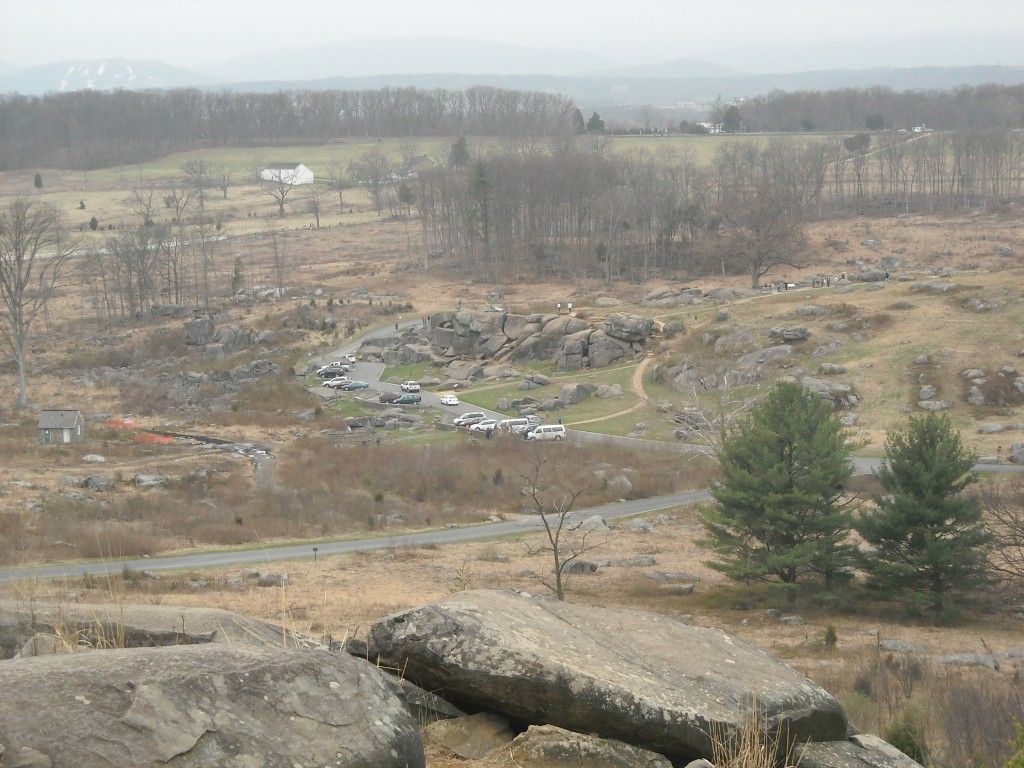Visiting Gettysburg National Military Park
The three day Battle of Gettysburg, Pennsylvania (July 1st-3rd, 1863) was the largest and costliest in terms of casualties in the Civil War, with over 51,000 total casualties, including over 7,000 killed. The Union victory ended General Robert E. Lee’s second and final invasion of Union territory, and was a turning point of the war in the Eastern theatre of operations, although the war would continue for nearly two more years.
Preservation of portions of the battlefield as a memorial began almost immediately by a private group, the Gettysburg Battlefield Memorial Association. The group transferred its land to the Federal Government in 1895, which established Gettysburg National Military under direction of the War Department. The National Park Service took over administration of the park in 1933. Though there have been various waves of development and preservation over the years, the emphasis in recent times has been to preserve or restore the battlefield to its 1863 appearance as much as possible.
The best place to start a tour of the Gettysburg battlefield is at the Visitor Center. The Visitor Center and Museum has exhibits and displays of Civil War weapons and other artifacts, interactive exhibits, a film, and the Gettysburg Cyclorama, an enormous (377 feet long and 42 feet high) circular painting of Pickett’s Charge. Painted in the 1880’s, the Gettysburg Cyclorama one of only two Civil War cycloramas on display (the other is the Battle of Atlanta Cyclorama in Atlanta). There is also a bookstore and refreshment stand. While most Visitor Centers at National Parks are owned by the park service, this one is owned and operated by the private Gettysburg Foundation, and there is an admission fee charged to view the exhibits, film, and cyclorama. There is no admission fee to visit the battlefield itself.
There is a 24 mile self guiding auto tour that begins at the Visitor Center and follows a route that approximately matches the major events of the battle in chronological order, beginning at McPherson Ridge on the northeastern edge of town. This is where General John Buford’s cavalry first made contact with advancing Confederate forces on July 1st and held them long enough for Union infantry to arrive. A short distance away is the Eternal Light Peace Memorial, dedicated on the 75th anniversary of the battle in 1938 by President Franklin Roosevelt. The route travels along Seminary Ridge, site of the Confederate battle lines. It also winds around Little Round Top, Devils Den, the Wheatfield, and the Peach Orchard, all sites of intense fighting on July 2nd. The tour moves on to sites on Culp’s Hill, which was the Union right flank on July 2nd and 3rd. Confederate attacks on the right at Culp’s Hill and the left at Little Round Top were driven off on July 2nd, setting the stage for the Pickett’s Charge assault against the Union center on Cemetery Ridge on July 3rd. The tour route then takes you to the location of the Union defense of Pickett’s Charge, and the High Water Mark of the Confederate assault. Standing behind the stone wall at this location, one imagine what the Federal soldiers saw as the Confederates marched towards them. The auto tour concludes at the nearby Soldiers National Cemetery, where many of the Union dead were laid to rest and where President Abraham Lincoln made his famous Gettysburg Address speech at the dedication of the cemetery on November 19th, 1863.
Not on the auto tour is the East Cavalry Battlefield site, about four miles east of the Visitor Center. Union Cavalry intercepted General J.E.B. Stuart’s Confederate cavalry here on July 3rd, preventing Stuart from getting in the rear of the Union infantry on Cemetery Ridge during Pickett’s Charge. The site is accessible by car, and information on visiting it and what happened there is available at the Visitor Center.
There are over 1300 monuments to individuals, states, and military units in the park, with some outside the park boundaries. Many of the monuments to regiments and other military units were placed based on information from veterans themselves, and are located where those particular units were deployed on the battlefield. There are also over 400 cannon on display. There are three observation towers–at Oak Ridge, not far from the Eternal Light Peace Memorial on the north side of the battlefield; on Warfield Ridge, just south of Seminary Ridge on the southwest side of the battlefield; and on Culp’s Hill on the east side of the battlefield.
Park Ranger led programs, battlefield walks and living history demonstrations are also presented year round, with a reduced schedule in the winter. Licensed Battlefield Guides are also available for hire for those wishing to take a tour with a very knowledgeable tour guide.
For more information on visiting Gettysburg National Military Park, current fees, and Ranger led program schedules, see the park’s website.
Amazon affiliate links: We may earn a small commission from purchases made from Amazon.com links at no cost to our visitors. For more info, please read our affiliate disclosure.





